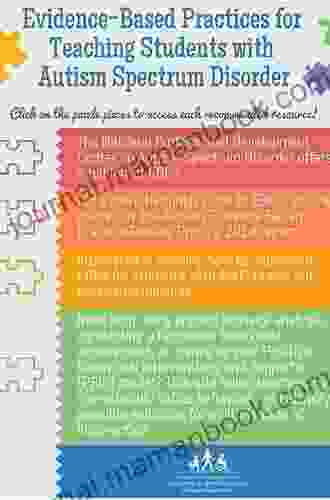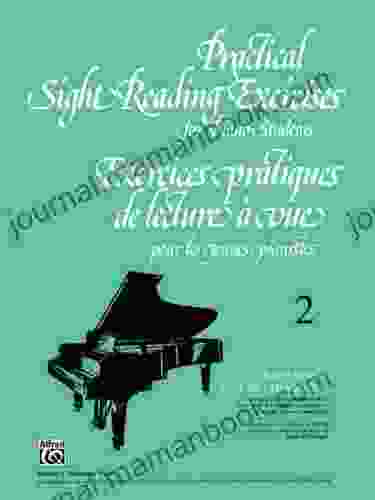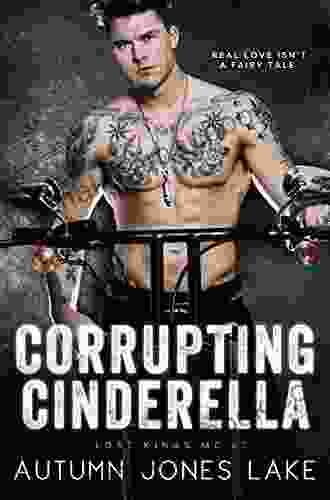A Comprehensive Guide for Educators: Step-by-Step to Empowering Students

In the ever-evolving landscape of education, educators play a pivotal role in shaping the minds and futures of our students. Empowering students to become self-directed, lifelong learners who are equipped with the skills and knowledge to succeed in an increasingly complex world is paramount. This comprehensive guide will provide educators with a step-by-step approach to empowering students through personalized learning, differentiated instruction, classroom management, and assessment strategies.
4.6 out of 5
| Language | : | English |
| File size | : | 1325 KB |
| Text-to-Speech | : | Enabled |
| Screen Reader | : | Supported |
| Enhanced typesetting | : | Enabled |
| Word Wise | : | Enabled |
| Print length | : | 223 pages |
Step 1: Embracing Personalized Learning
Understanding Personalized Learning
Personalized learning is a student-centered approach that tailors instruction and learning experiences to the unique needs, strengths, and interests of each student. By understanding the individual learning styles, strengths, and interests of students, educators can create tailored learning paths that cater to their individual needs.
Implementing Personalized Learning
- Assess student needs: Utilize diagnostic assessments to identify students' strengths and areas for growth.
- Create flexible learning environments: Provide students with choices in learning activities, resources, and assessments.
- Utilize technology: Leverage technology tools to individualize instruction and provide students with personalized feedback.
- Foster student-teacher collaboration: Collaborate with students to set learning goals and develop learning plans.
Step 2: Differentiating Instruction
Understanding Differentiated Instruction
Differentiated instruction involves modifying instruction based on students' readiness, learning styles, and interests. By differentiating instruction, educators can provide students with meaningful learning experiences that address their specific learning needs.
Implementing Differentiated Instruction
- Provide tiered assignments: Offer assignments with varying levels of difficulty to cater to students' diverse learning needs.
- Create flexible grouping strategies: Group students based on their learning styles, interests, or abilities.
- Utilize learning contracts: Allow students to negotiate learning goals and assessment methods.
- Incorporate multisensory activities: Engage students through hands-on learning, visual aids, and auditory experiences.
Step 3: Establishing Effective Classroom Management
Understanding Effective Classroom Management
Effective classroom management involves creating a positive and structured learning environment where students feel respected, motivated, and supported. By establishing clear rules, routines, and procedures, educators can foster a conducive learning environment that minimizes distractions and maximizes engagement.
Implementing Effective Classroom Management
- Establish clear expectations: Communicate classroom rules, expectations, and consequences clearly.
- Foster a positive classroom culture: Create a respectful and inclusive classroom environment.
- Utilize routines and procedures: Implement consistent routines and procedures for transitions, activities, and assignments.
- Provide positive reinforcement: Acknowledge and reward student effort and progress.
Step 4: Utilizing Assessment Strategies
Understanding Assessment Strategies
Assessments are an integral part of the learning process as they provide both educators and students with valuable feedback on student progress. By utilizing a variety of assessment strategies, educators can assess student learning and provide feedback that drives improvement.
Implementing Assessment Strategies
- Formative assessment: Utilize ongoing assessments, such as quizzes, discussions, and observations, to provide students with feedback during the learning process.
- Summative assessment: Conduct summative assessments, such as tests and projects, to evaluate student learning at the end of a unit or course.
- Self-assessment: Encourage students to reflect on their own learning and assess their progress.
- Peer assessment: Facilitate opportunities for students to provide feedback to their peers.
Empowering students is a continuous journey that requires a multifaceted approach. By embracing personalized learning, differentiating instruction, establishing effective classroom management, and utilizing assessment strategies, educators can create learning environments that foster student growth, engagement, and empowerment. This guide has provided educators with a step-by-step approach to empower students and nurture their journey towards lifelong learning and success.
4.6 out of 5
| Language | : | English |
| File size | : | 1325 KB |
| Text-to-Speech | : | Enabled |
| Screen Reader | : | Supported |
| Enhanced typesetting | : | Enabled |
| Word Wise | : | Enabled |
| Print length | : | 223 pages |
Do you want to contribute by writing guest posts on this blog?
Please contact us and send us a resume of previous articles that you have written.
 Top Book
Top Book Novel
Novel Fiction
Fiction Nonfiction
Nonfiction Literature
Literature Paperback
Paperback Hardcover
Hardcover E-book
E-book Audiobook
Audiobook Bestseller
Bestseller Classic
Classic Mystery
Mystery Thriller
Thriller Romance
Romance Fantasy
Fantasy Science Fiction
Science Fiction Biography
Biography Memoir
Memoir Autobiography
Autobiography Poetry
Poetry Drama
Drama Historical Fiction
Historical Fiction Self-help
Self-help Young Adult
Young Adult Childrens Books
Childrens Books Graphic Novel
Graphic Novel Anthology
Anthology Series
Series Encyclopedia
Encyclopedia Reference
Reference Guidebook
Guidebook Textbook
Textbook Workbook
Workbook Journal
Journal Diary
Diary Manuscript
Manuscript Folio
Folio Pulp Fiction
Pulp Fiction Short Stories
Short Stories Fairy Tales
Fairy Tales Fables
Fables Mythology
Mythology Philosophy
Philosophy Religion
Religion Spirituality
Spirituality Essays
Essays Critique
Critique Commentary
Commentary Glossary
Glossary Bibliography
Bibliography Index
Index Table of Contents
Table of Contents Preface
Preface Introduction
Introduction Foreword
Foreword Afterword
Afterword Appendices
Appendices Annotations
Annotations Footnotes
Footnotes Epilogue
Epilogue Prologue
Prologue Melissa Washburn
Melissa Washburn Vivian Arend
Vivian Arend Katy Bowman
Katy Bowman Alex Hormozi
Alex Hormozi Susanne Chishti
Susanne Chishti Ann Campanella
Ann Campanella Laurie Zaleski
Laurie Zaleski Betty Crocker
Betty Crocker Lionel Shriver
Lionel Shriver Bill Harris
Bill Harris Sally Harper
Sally Harper William M Wiecek
William M Wiecek Rockridge Press
Rockridge Press Ayman Hassan
Ayman Hassan Barbara O Neal
Barbara O Neal Chindu Sreedharan
Chindu Sreedharan Richard A Lougy
Richard A Lougy Ellen K Cromley
Ellen K Cromley Dionne Brand
Dionne Brand Jino Antony
Jino Antony
Light bulbAdvertise smarter! Our strategic ad space ensures maximum exposure. Reserve your spot today!
 Ashton ReedFollow ·10.6k
Ashton ReedFollow ·10.6k Brady MitchellFollow ·19.1k
Brady MitchellFollow ·19.1k Greg CoxFollow ·8.3k
Greg CoxFollow ·8.3k William FaulknerFollow ·17.7k
William FaulknerFollow ·17.7k Arthur MasonFollow ·8.8k
Arthur MasonFollow ·8.8k Ed CooperFollow ·18k
Ed CooperFollow ·18k Dave SimmonsFollow ·18.1k
Dave SimmonsFollow ·18.1k Braeden HayesFollow ·10.2k
Braeden HayesFollow ·10.2k

 Alexandre Dumas
Alexandre DumasFugitive Telemetry: Unraveling the Secrets of the...
In the realm of...

 Caleb Carter
Caleb CarterBlack Clover Vol 25: Humans and Evil - A Journey into the...
Unveiling the Sinister Forces Black...

 Israel Bell
Israel BellHow to Make Offers So Good People Feel Stupid Saying No
In today's competitive business environment,...

 Simon Mitchell
Simon MitchellWrath of Hades: The Children of Atlantis
An Epic Tale of...

 Percy Bysshe Shelley
Percy Bysshe ShelleyStrengthen Your Immune System: Fight Off Infections,...
What is the...

 Clark Bell
Clark Bell10 Things I Wish Someone Had Told Me Earlier
As we navigate through life, we accumulate a...
4.6 out of 5
| Language | : | English |
| File size | : | 1325 KB |
| Text-to-Speech | : | Enabled |
| Screen Reader | : | Supported |
| Enhanced typesetting | : | Enabled |
| Word Wise | : | Enabled |
| Print length | : | 223 pages |












